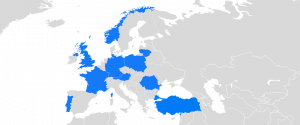
What is VAT Reporting?
VAT reporting is a summary of a business’ transactional records, including sales and purchases taxable and VAT information. It is usually submitted every month or 3 months, depending on a country’s legislation. The most prevalent versions in the EU are VAT declaration (or VAT return) and SAF-T. It is expected that electronic audit file SAF-T will replace VAT returns in many countries.
What is Standard Audit File for Tax?
SAF-T is an international standard for the electronic transmission of accounting data from enterprises to national tax authorities. Its standards are first defined by the OECD. The file requirements are expressed using XML, but the OECD does not impose any particular file format. The SAF-T reporting obligation is currently in place across a range of European countries.
SAF-T Reporting Requirements in Europe
In this model, businesses must locate and extract all financial transaction data. These data are then formatted as electronic XML files, Finally, they are submitted to the tax authority, either periodically or on-demand before an audit.
SAF-T Countries
SAF-T regulation is currently in place in Austria, Czechia, Poland, Norway, Portugal, Lithuania, Luxembourg and France. SNI has developed a SAF-T solution for each of these countries and already implemented many projects. Romania is also planning to implement a SAF-T requirement similar to the one in Poland. Early next year, it will start as a pilot phase for large taxpayers. It is expected to become mandatory in July 2021.
What are the benefits of SAF-T?
It makes tax audit much simpler and less costly for tax authorities. The ultimate goal is to reduce the VAT fraud and VAT gap. On the other hand, automated reporting of VAT data simplifies the reporting process for companies.
The SNI SAP solution enables smooth and automated extraction of financial data. These data are then processed and converted into XML files. Users can monitor this process easily through the SNI SAF-T Cockpit. Finally, the XML files are submitted to the tax authority through an SNI Connector.
SAF-T Schema
Although SAF-T in different countries has a similar format based on OECD SAF-T SCHEMA VERSION 2.0, every country’s legislation defines the mandatory fields to be filled in the report differently. So a business has to consider the specific rules and standards of the country in which it has reporting obligations.


